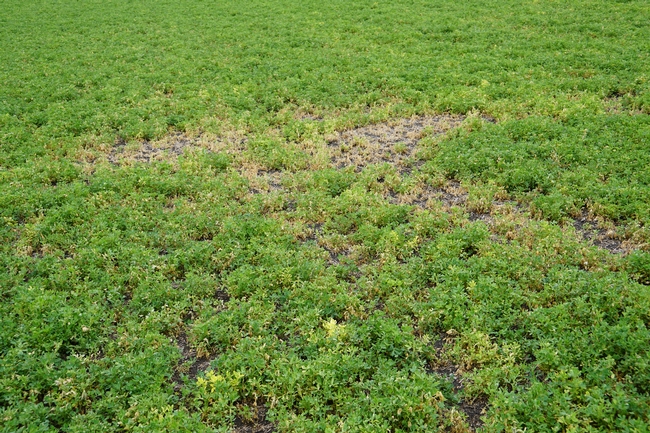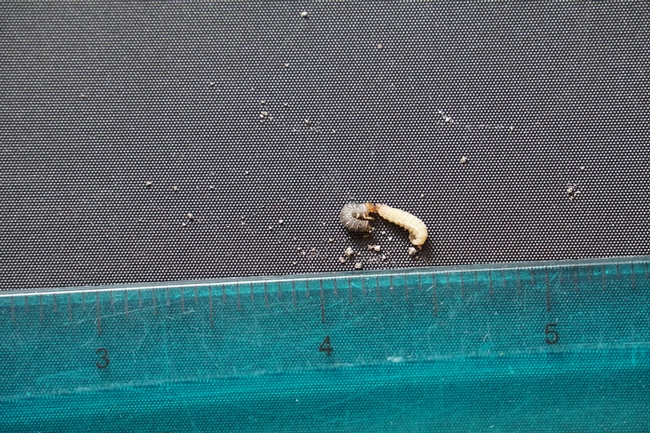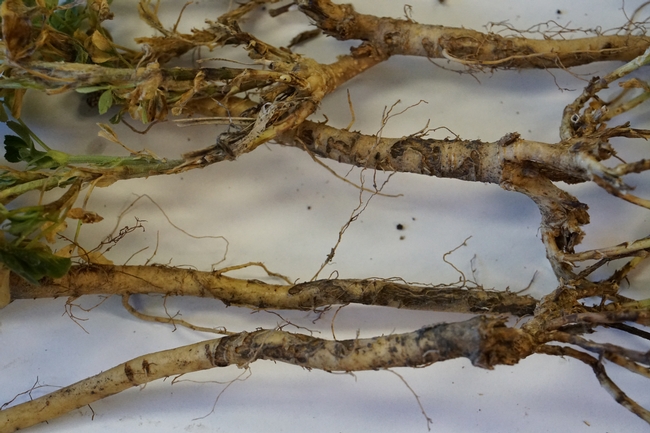The warm weather this week is hopefully the best remedy for jump-starting many alfalfa fields damaged by frost and hail the last couple of weeks. If you have fields with frost damage that are not improving, you might dig some alfalfa plants and look at the roots.
Recently we have multiple alfalfa samples brought into the office with damaged roots from clover root curculio (Sitona hispidulus). Clover root curculio has been found in numerous alfalfa fields over the last 20 years, but the infested acreage appears to be increasing and damage is pretty severe this year. Clover root curculio adults are similar in appearance to alfalfa weevil adults, but they are about one-third smaller and have a shorter, blunter snout. Clover root curculio adults also have a mottled brownish coloration on their back compared to the dark brown stripe on alfalfa weevil adults. The adults feed on alfalfa foliage. The white grublike larvae are roughly a ¼ inch long with a dark brown head.
The larvae can be found in the soil feeding on alfalfa roots.The easy way to determine if you have clover root curculio in your field is to look for larvae feeding damage on the roots (see picture).
Larval feeding on alfalfa roots can create points of entry for several alfalfa diseases such as Fusarium and Rhizoctonia. This spring, multiple infested fields had diseased patches where alfalfa was wilted to the ground. One sample was sent to UC Davis for disease diagnosis and it came back positive for Fusarium. Clover root curculio adults overwinter and become active when temperatures exceed 50°F in the spring. Adults lay eggs at the base of alfalfa plants in the spring and larvae hatch and feed on the roots. Larvae pupate in June or July and second generation can sometimes feed on alfalfa in late summer and fall.
Unfortunately, there are not any insecticides registered to control clover root curculio in alfalfa. We plan to do some insecticide testing this year to hopefully find an effective insecticide. Current management recommendations include rotating infested fields into a non-host crop, avoid planting new alfalfa next to infested fields, and proper irrigation and nutrient management. Also make sure to clean to equipment after visiting infested fields to prevent spreading the pest to new fields.


